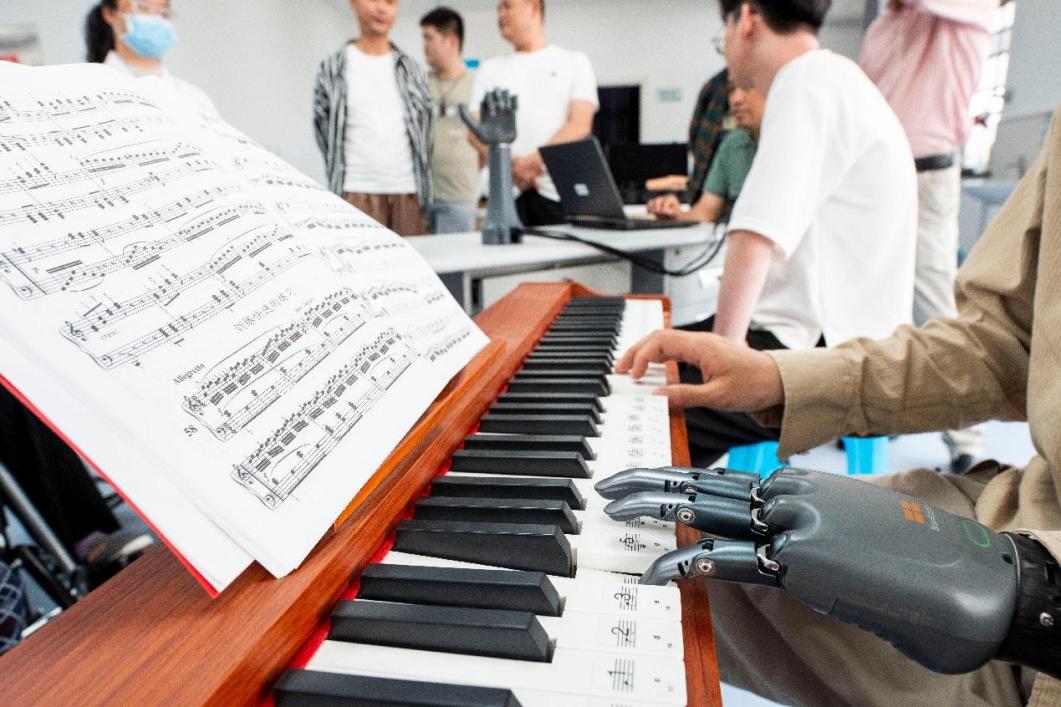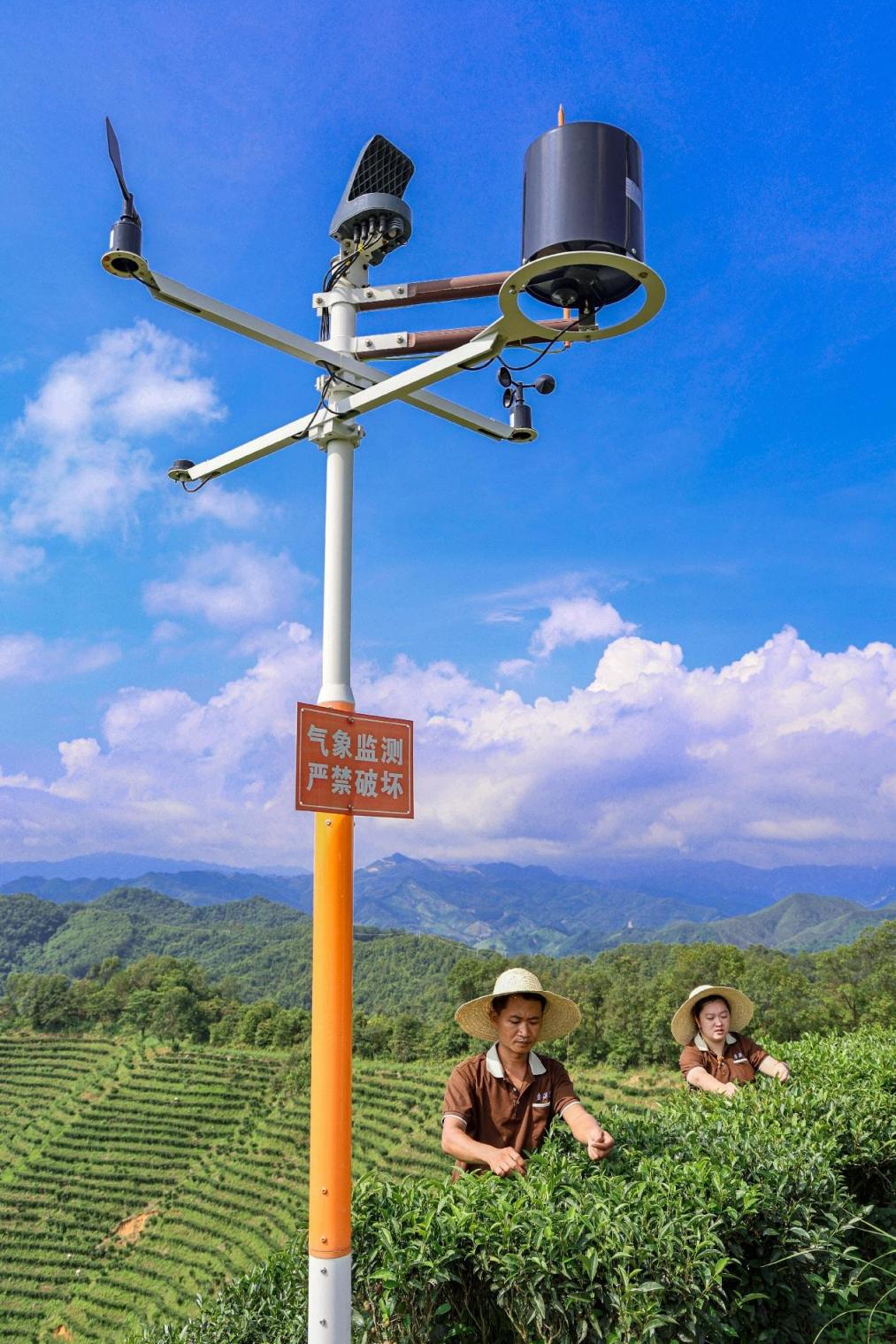




- BRNN
- BRI News
- BRNN News
- Database
Official Documents Polices and Regulations
Inter-government Documents International Cooperation BRI Countries
Business Guide Economic Data BRI Data
Trade
Investment Projects Latest projects
Cases - Content Pool

A patient uses a bionic robot hand to play the piano at a hospital in Xuancheng, east China's Anhui province. (Photo/Li Xiaohong)
At a recently held home service robot conference, humanoid robots captivated audiences with lifelike demonstrations across a variety of household scenarios - preparing sandwiches, cleaning tables, folding clothes, and even teaching children English. These advanced technologies offered a vivid preview of how innovation is reshaping everyday life.
China has long viewed improving people's well-being as the central aim of scientific and technological innovation. In recent years, an increasing number of "small yet beautiful" innovations have been seamlessly integrated into daily routines, reflecting the public's growing aspiration for a better quality of life.
On farmlands, intelligent harvesters now process up to 600 kilograms of grain per minute, significantly enhancing harvest efficiency. In operating rooms, Chinese domestically developed orthopedic and endoscopic surgical robots are now in active use. At eldercare institutions, smart wristbands and canes are improving the quality and responsiveness of services for seniors.

Photo shows a meteorological monitoring device in a tea garden in Cangwu county, Wuzhou, south China's Guangxi Zhuang autonomous region. (Photo/Yan Guihai)
As German philosopher Friedrich Engels once observed, "Once a technical need arises in society, it will advance science more than ten universities would do." With a population of over 1.4 billion and a middle-income group exceeding 400 million people, China boasts a vast market and rich scenarios for application. As everyday demands grow and industries seek innovation, the synergy between supply and demand fuels rapid technological advancement, unlocking new opportunities for emerging industries.
The introduction of the Fuxing CR450 high-speed train is expected to significantly boost travel efficiency and help China's rail equipment sector surpass the trillion-yuan ($140.37 billion) threshold. Frequent satellite launches by commercial space enterprises are enabling smarter agricultural practices, with China's commercial space industry projected to reach 2.8 trillion yuan by 2025. Meanwhile, nuclear power units such as the Hualong One and Guohe One each generate over 10 billion kilowatt-hours of electricity annually, enough to power millions of households.
These developments underscore how a market-oriented approach, driven by application, integration, and iterative advancement, transforms scientific and technological capabilities into tangible development advantages, ensuring broader access to innovation.

A service robot distributes mooncakes to pedestrians outside a shopping mall in Sanya, south China's Hainan province, Oct. 6, 2025. (Photo/Li Xueshi)
"China is investing more and more resources to ensure that people with disabilities can live the lives they want," said Jose Maria Viera, executive director of the International Disability Alliance. His observation highlights how technological applications are opening up new paths for improving public well-being.
Hospitals have launched AI-assisted navigation systems to streamline medical visits. The widespread adoption of digital social security cards allows individuals to access benefits, transfer pension accounts, and apply for payments online, reducing in-person visits and enabling data-driven efficiency. Through pragmatic innovation, China is addressing everyday challenges and long-standing livelihood issues, steadily enhancing people's sense of fulfillment, happiness, and security.
At a deeper level, advancing technology for the public good is not only about improving living standards, but also defines the trajectory of innovation itself.
Emerging technologies such as AI, biomedicine, and gene editing are becoming new growth engines while also raising complex ethical and governance challenges. Large language models, for instance, may pose privacy risks, and technologies like face-swapping or voice cloning carry the potential for fraud or misinformation.
As a result, technological innovation is no longer merely a technical endeavor. It carries ethical, governance, and societal implications. To maximize the benefits of innovation while managing its risks, a commitment to "technology for good" must be paired with sound legal and regulatory frameworks.
Ultimately, innovation must serve humanity. China continues to prioritize the practical application of advanced technologies to ensure the benefits of progress are widely shared, building a foundation for a better life for all.

Tel:86-10-65363107, 86-10-65368220, 86-10-65363106